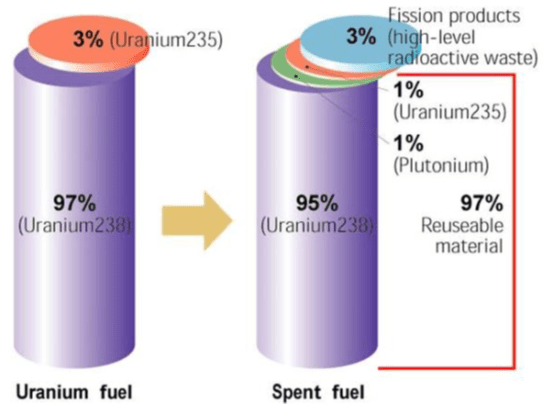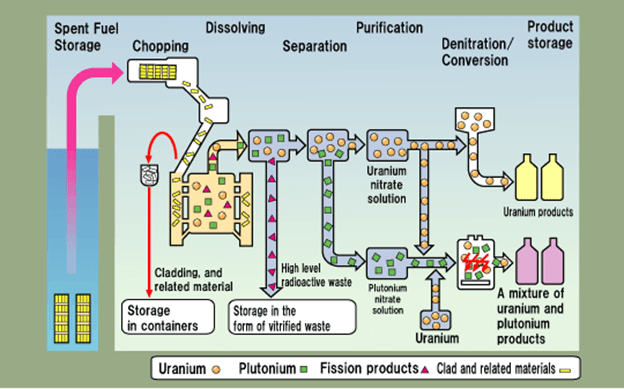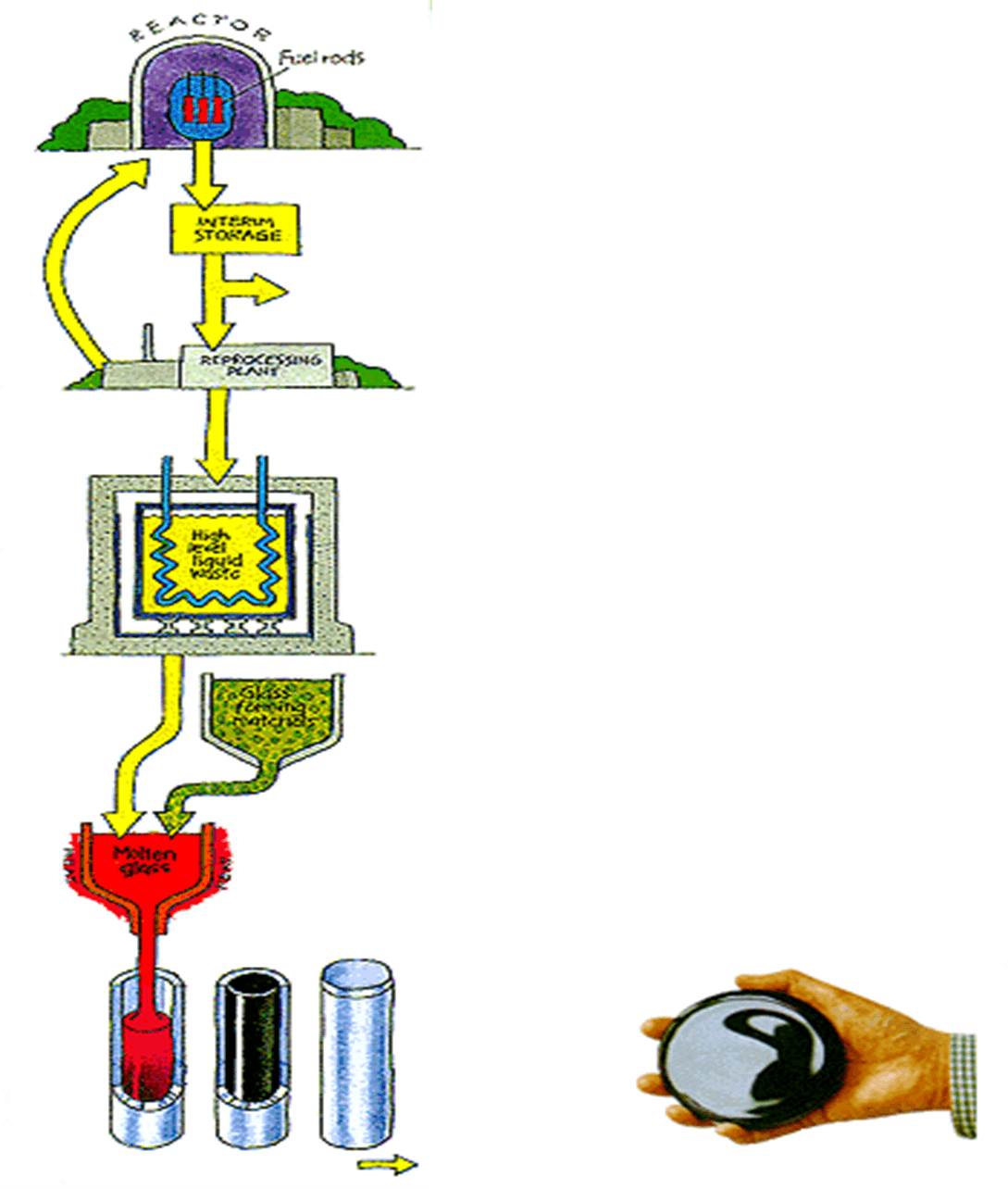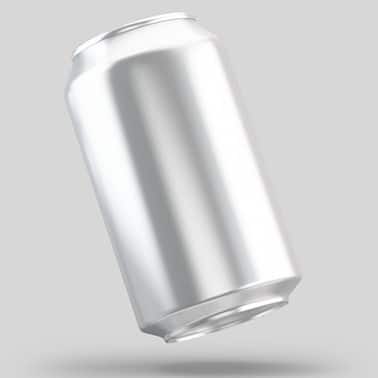The anti-nuclear mantra is that there is no solution to the “problem” of used nuclear fuel, and for this reason nuclear power plants should be shut down. The truth of the matter is that there is no solution only for the “political problem” of used nuclear fuel, because scientifically and practically speaking, there is no problem.
The question of what to do with used nuclear fuel was answered decades ago. It’s called reprocessing, and it was U.S. scientists who developed the reprocessing technology that is being used by other countries in the world today. The insurmountable political problem to reprocessing used nuclear fuel in the United States, known as nuclear proliferation, is the false assumption that reprocessing used nuclear fuel produces plutonium that can be used to manufacture nuclear weapons. This falsehood has been addressed in a previous article entitled Nuclear Energy Fables and Facts.
Let’s begin this discussion by comparing new and used nuclear fuel to see what the constituents of used fuel actually are. The graphic below illustrates the content of new and used nuclear fuel.

The cylinder on the left represents three-percent enriched new reactor fuel (i.e., natural uranium enriched to three percent in the U-235 isotope). The cylinder on the right represents nuclear reactor fuel that has been in a reactor core producing power for about four years. Ninety-seven percent of used nuclear fuel consists of reusable material (U-235, U-238, and plutonium), while only three percent is actually waste. Reprocessing of used nuclear fuel would result in usable uranium and plutonium for nuclear reactors, and numerous radionuclides that could be used in medical and industrial applications, as shown in the table below.
| Used Fuel Material | Material Disposition |
| Reprocessed plutonium and uranium | Fission in thermal, fast or sub-critical reactors |
| Fuel cladding, filters | Less stringent storage as intermediate-level waste |
| Long-lived fission and activation products | Nuclear transmutation or geological repository |
| Medium-lived fission products Cs-137 and Sr-190 | Medium-term storage as high-level waste |
| Useful radionuclides and noble metals | Industrial and medical uses |
High-level waste from used reactor fuel consists of two distinct components — fission products and actinide element isotopes. The actinide isotopes, primarily plutonium, neptunium, americium, and curium, are the activation products created by non-fission capture of neutrons by U-238. Using accelerators to transmute the long-lived fission products and actinides would reduce the radioactivity of this waste.
Used nuclear-fuel waste can be characterized by both volume and radioactivity content as shown in the following table.
| By Volume | By Radioactive Content | |
| High Level Waste | 3% | 95% |
| Intermediate Level Waste | 7% | 4% |
| Low Level Waste | 90% | 1% |
High-level waste accounts for only three percent of the total waste volume, but 95 percent of the radioactivity content, while low-level waste accounts for 90 percent of the total waste volume, but only one percent of the radioactivity content. It is very apparent that used nuclear fuel should be reprocessed to minimize the amount of highly radioactive material that must be carefully managed.
Reprocessing removes certain fission products and shorter-lived actinide isotopes from used fuel so the remaining used fuel can be manufactured into new fuel for advanced reactors. Actinides are the primary, long-lived isotopes that make used reactor fuel radioactive for thousands of years.
A major benefit of reprocessing is to reduce the actinide content in the final waste by transmuting (in advanced reactor fuel) the long-lived actinide isotopes. While reprocessing concentrates fission products in the final waste, it shortens the radioactive lifetime of the waste substantially by removing the long-lived actinide isotopes from the mix.
The following graphic illustrates how used nuclear fuel is reprocessed to separate the material into intermediate level waste (fuel rod cladding, etc.), high level waste (fission products), and usable uranium and plutonium streams.

Liquid high-level wastes are mixed with glass-forming materials and melted. The molten glass is then poured into robust stainless-steel canisters, as shown in the graphic below, which are then sealed by welding.

The borosilicate glass block shown in the above graphic contains material that is chemically identical to high-level waste from nuclear fuel reprocessing. A block this size would contain the total high-level waste arising from nuclear electricity generation for one person throughout a normal human lifetime.
Another meaningful illustration is the amount of nuclear material required to generate the electricity needs for one person’s lifetime and the resulting amount of reprocessed nuclear waste requiring disposal as shown below.

Nuclear material required per person per lifetime: 1 golf ball

Volume of waste per person generated for their lifetime: one soda can. These fission products remain radioactive for only 300 years.
The reprocessing debate has been predominantly a U.S. phenomenon. As mentioned above, the nuclear proliferation issue is the primary argument used to oppose the reprocessing of used nuclear fuel; that is, that recovered plutonium can be used to manufacture nuclear weapons. However, France, the United Kingdom, Russia, and India have all been reprocessing used nuclear fuel for more than 40 years. These countries don’t have the nuclear proliferation concern that has prevented used nuclear fuel reprocessing in the United States because, as was stated in the opening paragraph, the insurmountable problem in the United States is politics.
Other articles in this series:
Dispelling Irrational Fear of Radiation
Understanding Radiation Risks & Benefits
The Dynamic World of Radioactive Decay
Latest Low-dose Radiation Research Program a Retread?
Radiation Dose and Cancer Risk
